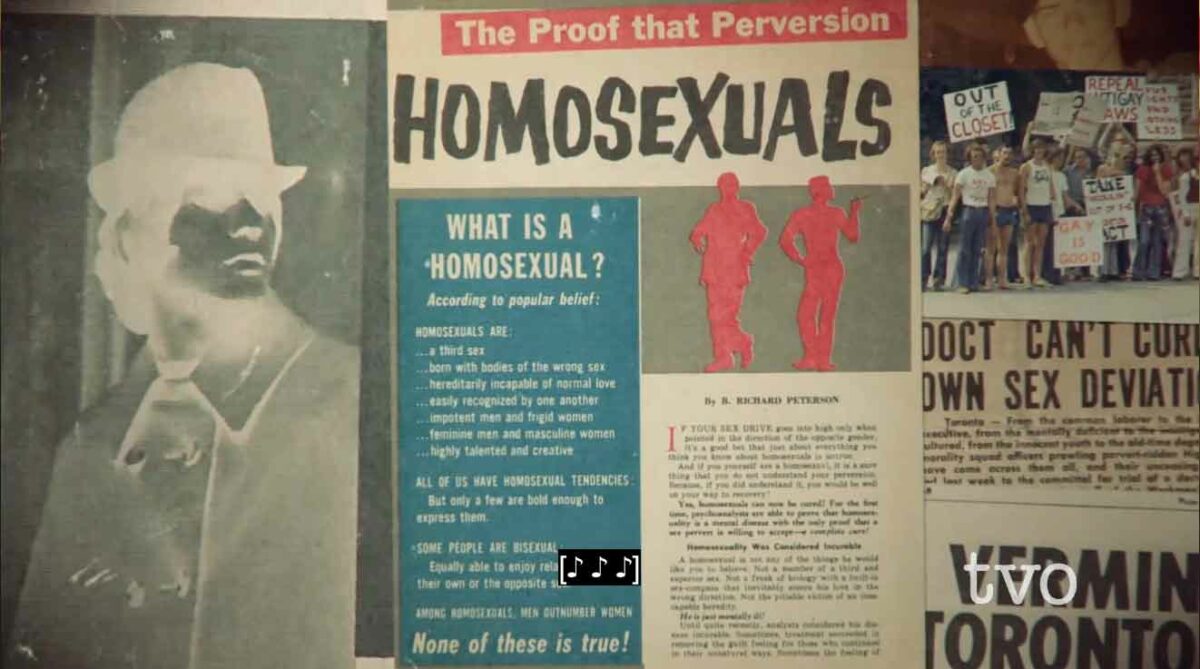By Gary Kinsman
The Canadian War on Queers was initiated in the 1950s. It built on earlier disciplinary and purge policies in the Canadian military and broader social designations of ‘homosexuals’ as “criminal sexual psychopaths” and then “dangerous sexual offenders.” These designations empowered legal and police practices to criminalize homosexual acts.
“Homosexuals” who had previously been portrayed as ‘fellow travellers’ of the Left and Communists were designated by the Canadian state at its highest levels as “national security risks” supposedly suffering from a “character weakness” that made us vulnerable to “blackmail” from “Soviet agents.”
The RCMP hunt for homosexuals
The central policing arm of this national security campaign was the RCMP. They played a crucial role in doing surveillance work on “suspected homosexuals” and in purging thousands of “confirmed homosexuals” from the public service, with a focus on Ottawa. The RCMP developed a Character Weakness subdivision of its Directorate of Security and Intelligence which focused mostly on ‘homosexuality.’ They started with External Affairs and spread to many government departments. External Affairs was devastated, as were many other departments. The RCMP also participated with military intelligence and policing in the purge campaigns in the military.
The RCMP did surveillance of parks and parties in Ottawa, including the basement tavern of the Lord Elgin in the early and mid-1960s when they took photos of the men who were there. They began to face resistance from ‘homosexuals’ who had previously been informants and who now realized they would be shunned by their gay friends if they continued doing this. Even in the Lord Elgin gays would expose the RCMP operatives by acting like they were taking photos of them and turning the tables against them. The RCMP noted that the ‘homosexuals’ who had been cooperative were now refusing to cooperate and even resisting the RCMP and many people interviewed for The Canadian War on Queers book said that the only people ever ‘blackmailing’ them were the RCMP trying to get them to give them the names of their gay friends.
Queer non-cooperation led to criminalization and flawed research
In response to this non-cooperation, which the RCMP itself noted in its 1962-63 report, they had to shift strategies. They began to engage in park sweeps and would tell men they found cruising in parks that if they did not get the names of all their gay friends they would lay criminal charges against them at a time when all homosexual acts were criminalized. In 1969, the criminal code reform allowed the police to continue to sweep parks since it only provided limited exemptions for ‘gross indecency’ and ‘buggery’ and any acts in the very broad ‘public’ realm, involving more than 2 people, and anyone under 21 continued to be criminalized.
In response to this non-cooperation and resistance, the Security Panel, which the RCMP actively participated in, initiated what came to be called the “Fruit Machine” research. Tens of thousands of dollars were spent on attempting to find a ‘scientific’ means of identifying gay men and lesbians so they could be refused employment in the public service or be purged. It never did work. The RCMP was to provide the gay ‘subjects’ for the research as well as the participants in the ‘normal’ control group. When participants in the ‘normal’ control group were found out to be ‘fruits.’ the journalist John Sawatsky reported, RCMP officers began referring to the research as the “Fruit Machine.”
Only men worked as RCMP officers during this period and this meant the RCMP had little contact with lesbian networks and could not recruit lesbians for this research. It was not until 1974 that women were able to be employed as regular RCMP officers. Towards the end of Fruit Machine research,locating people for the ‘normal’ control group was taken away from the RCMP and transferred to the military.

RCMP surveillance and raids expand
In the 1970s RCMP surveillance expanded to include gay and lesbian organizations since opposing the purge campaign was seen as a risk to national security. The first gay and lesbian rights demonstration on Parliament Hill in 1971 called We Demand! was under RCMP surveillance, as were gay and lesbian conferences, lesbians in the feminist movement, and even women’s dances. During the RCMP mobilization to clear Montreal of gay men and lesbians prior to and during the 1976 summer Olympics there were major police raids that closed down almost all gay and lesbian bars and clubs in the city until gay organizing and resistance stopped this.
RCMP surveillance work was also directed at a broad range of organizing including the Quebec independence movement, Indigenous organizing, Black liberation activism, and the left. Revelations of RCMP ‘wrongdoing’ led to the McDonald Commission, and the removal of national security work from the RCMP from 1984 until 2001. Despite this removal, the RCMP continued to play a continuing role in the Canadian War on Queers including in opposition to ending the purge campaign internal to the RCMP and more generally. This is one of the reasons why the RCMP must be defunded and abolished.
Source: Gary Kinsman and Patrizia Gentile, The Canadian War on Queers: National Security as Sexual Regulation, Vancouver: UBC Press, 2010.